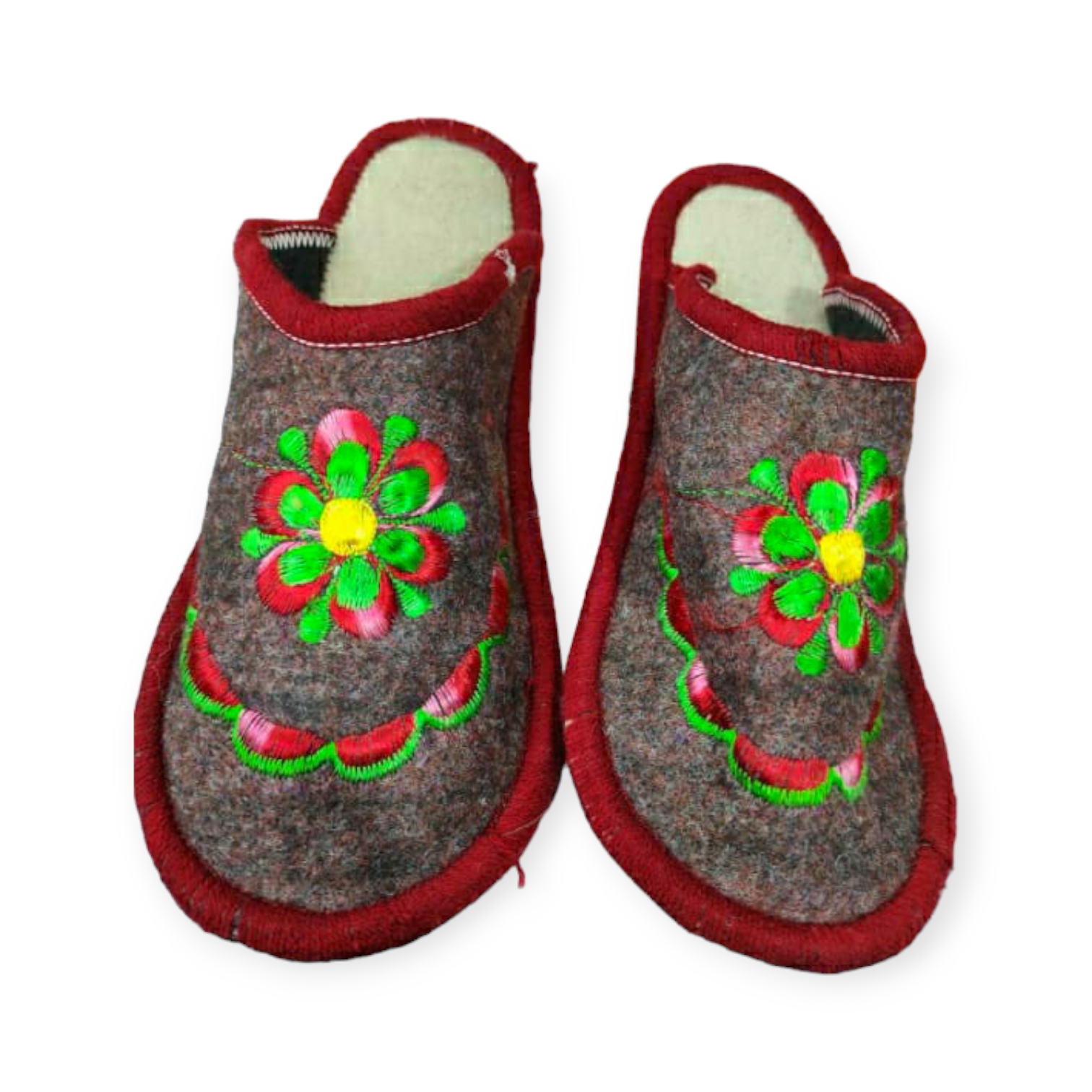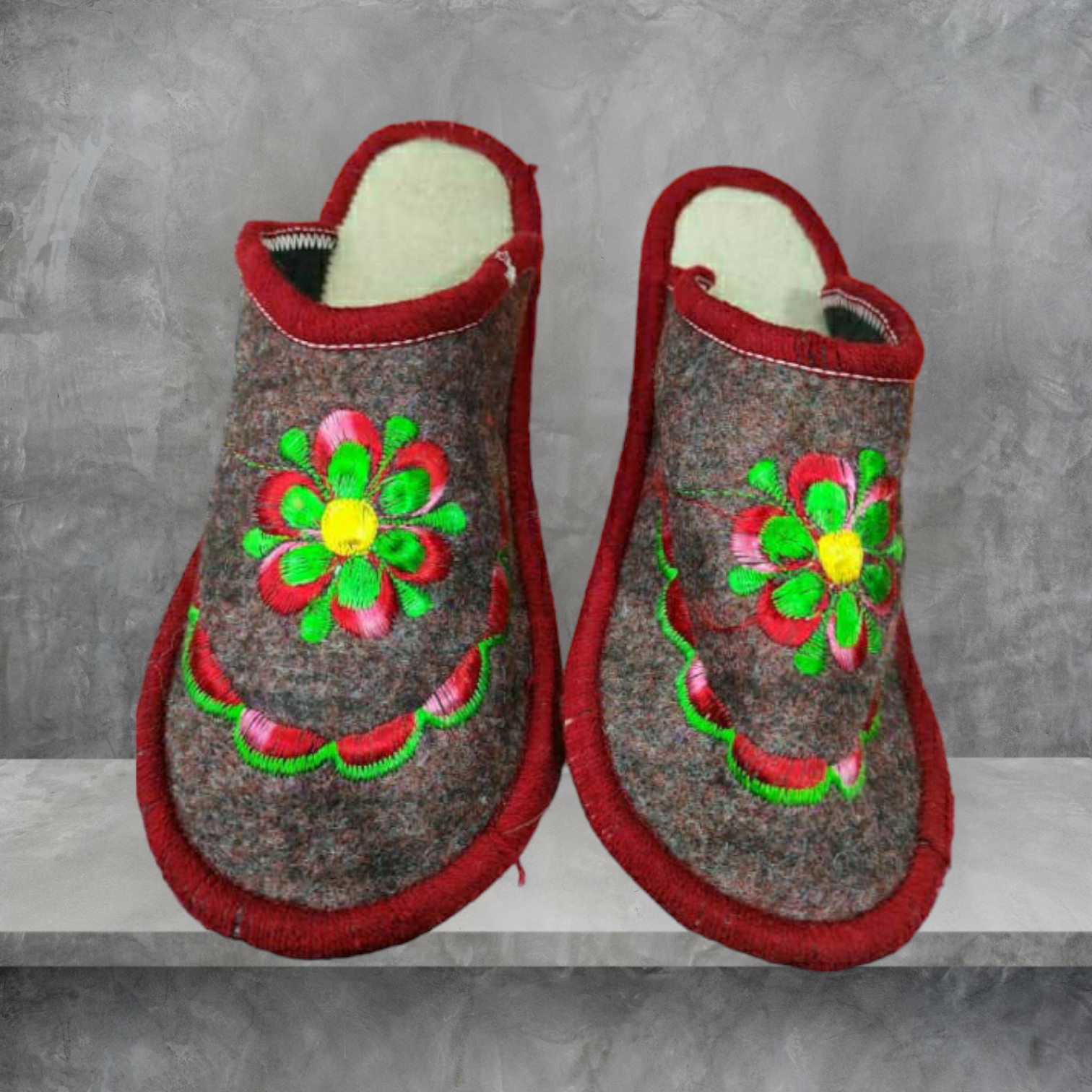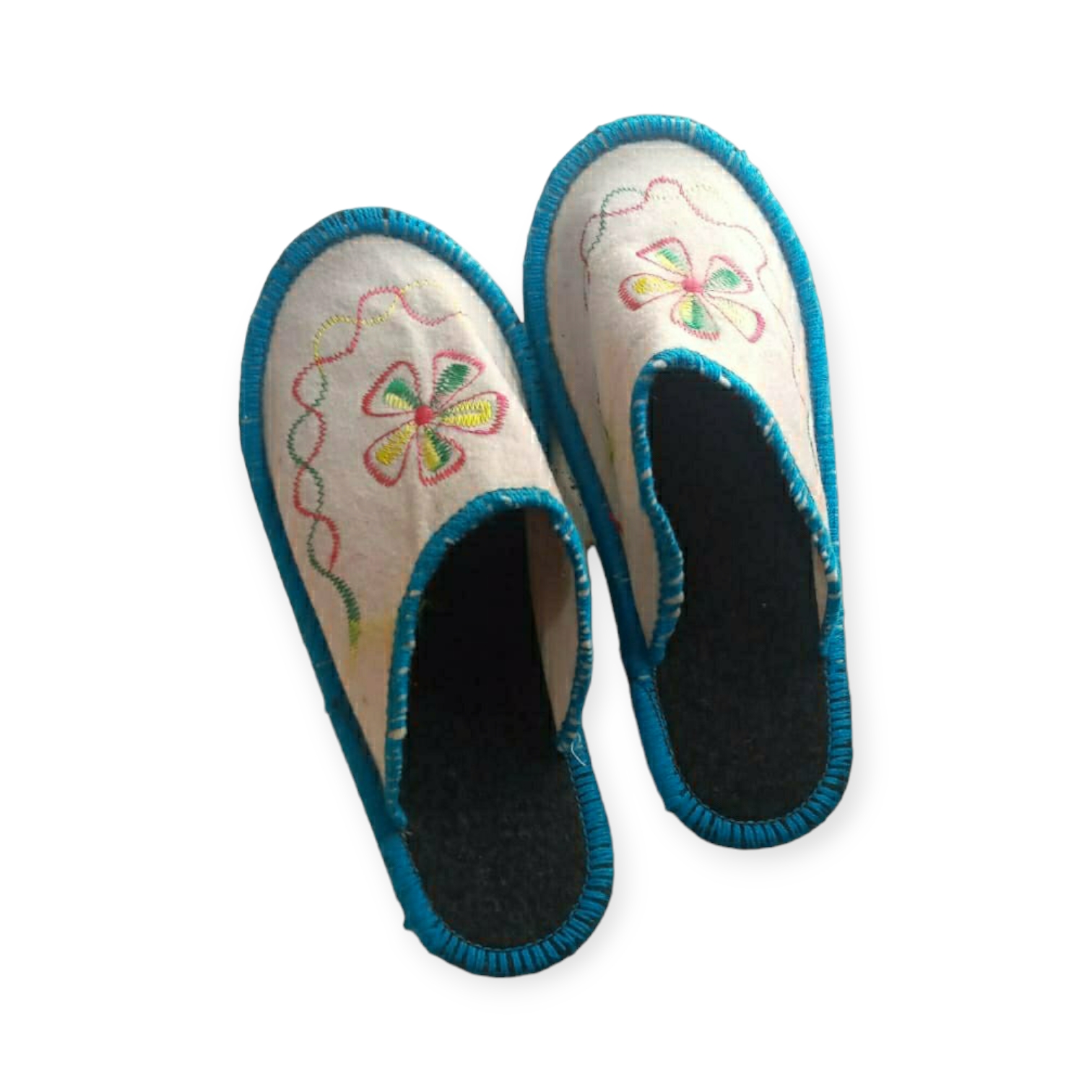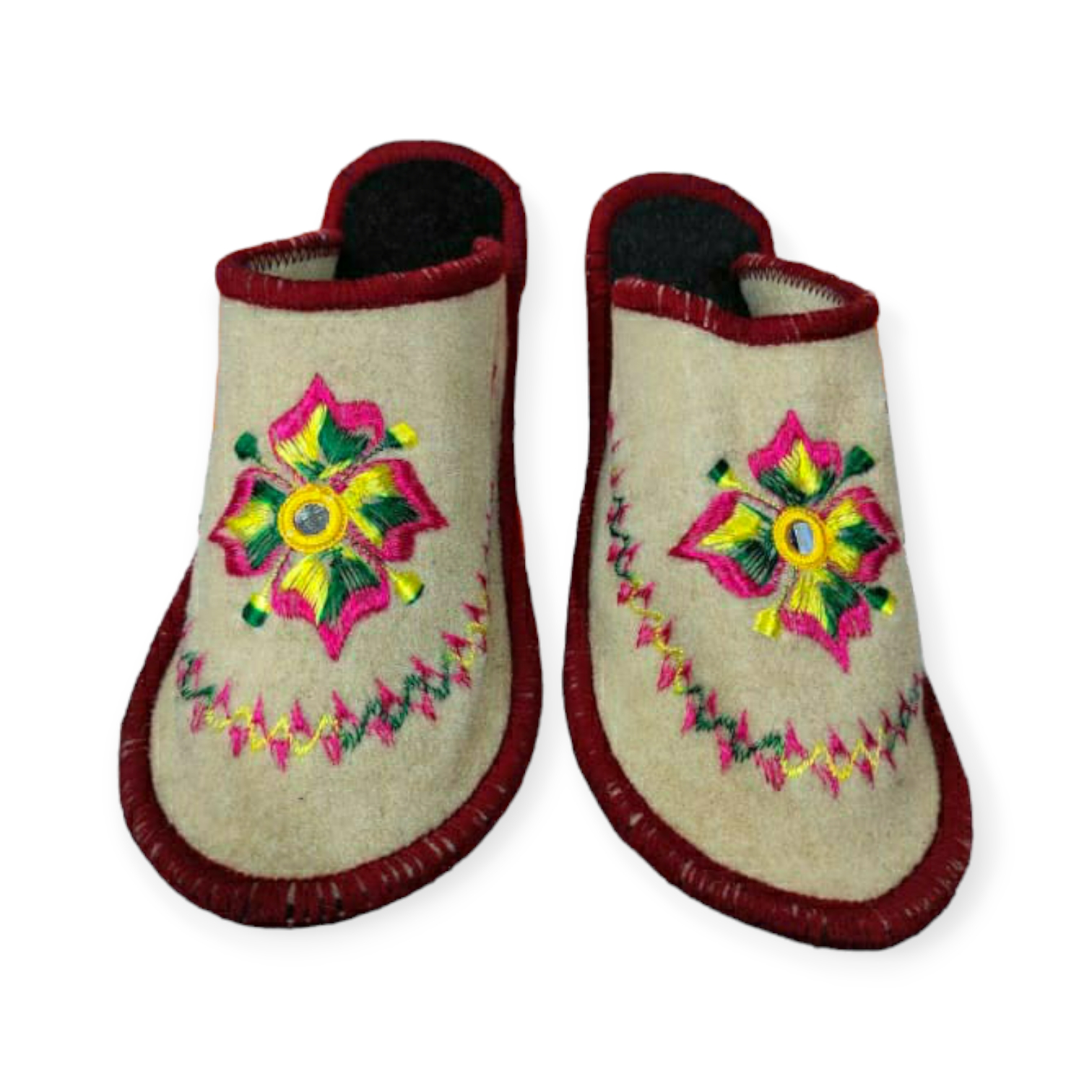Chamba Chappal in Grey and Orange Colour
The Chamba Chappal is a traditional handcrafted slipper originating from the Chamba region in Himachal Pradesh, India. This pair, adorned in grey and orange hues, blends cultural artistry with contemporary style. The grey base provides a neutral, versatile foundation, while the vibrant orange accents add a striking contrast, enhancing its visual appeal. Made from high-quality leather and detailed with intricate embroidery, these chappals are not only comfortable and durable but also a testament to the region's rich artisanal heritage.
- Need Assistance? Feel free to reach us at support@giheritage.com or contact +91-7483932390 for assistance.
- Note: Although an artisan meticulously crafts their work with great attention to detail, there may still be some minor difference present, showcasing the inherent imperfections that add a touch of uniqueness to each piece. Kindly ignore such minor differences and slight variations in color, weight and dimensions as it adds to the uniqueness of product. Each piece is a one-of-a-kind treasure, making your purchase truly special.
- • GI Origin : Himachal Pradesh
- • Product Material : Blanket Cloth Fabric
- • Size : Free Size
- • Weight : ~ 300 Grams
- • Ideal For : Indore
- • Colour : Grey & Orange
Product Description:
The history of leather crafting and embroidery on leather goods in Himachal Pradesh is fascinating. Two types of footwear, plain and embroidered chappals, are crafted by men and women respectively. These handcrafted leather chappals come in natural shades and various colors. Traditional Chamba Chappals, whether plain or embroidered, are known for their exceptional comfort. They are adorned with multicolored threads - red, black, green, yellow, and blue, along with imitation gold thread. Besides chappals, a variety of shoes, sandals, socks, and belts are also available. Modern trends have introduced new designs and varieties of leather goods alongside traditional ones.
Designs:
-
Baloo Design:
The sandal design is inspired by the nose ring known as Baloo in the local Chambayali language, worn by women during weddings and festivals.
-
Notched V Shape:
These sandals, designed specifically for women, resemble a snake's hood and have three variations: Kadhai (fleck), color decoration, and natural.
-
Fish Design:
The design of fish slippers mimics the graceful posture of swimming fish, portraying their nose, eyes, and fins.
-
Chaanani Design:
This design captures the allure of the moon after a full moon night, known as Chaanani.
Geographical Area of Production:
The primary production areas for Chamba Chappals, including various embroidered footwear and leather socks, are Mehla, Bhattiyat, Tisa, and Salooni in the Chamba district.
Proof of Origin (Historical Records):
The origins of Chamba Chappals trace back to 1808 when a Katoch princess commissioned beautifully embroidered leather footwear from a cobbler in Panj Baria village. Since then, this craft has flourished in Chamba, becoming popularized during the British colonial era.
Method of Production: Raw Materials
- Leather: Buff Leather for the upper and sole, Sheep and Goat leather for vamp, tongue, and quarter.
- Rubber: Essential for making chappal soles.
- Wool: Used for embroidery.
- Threads: Silver and golden threads for embroidery.
- Vetvet Cloths: Used for embroidery and stitching on leather.
- Water: Used in color preparation.
- Synthetic Adhesive: Used for assembly.
- Metal Sheets: Cut into various shapes for patterns.
- Oil: Used for coloring.
- Tools: Various tools for cutting, pasting, and lasting leather.
- Sewing Machines: Used for stitching.
Tools and Their Uses
- Seeder: Creates small circular impressions.
- Background Tool: Emphasizes designs in carved leather.
- Beveler: Creates indentation for raised designs.
- Rambi: Used for cutting and skinning leather.
- Swivel Knife: Makes bold cuts for pattern definition.
- Rawhide Mallet: Drives stamps for background matting.
- Comouflage Tool: Adds emphasis to carved areas.
- Pear Shader: Presses down areas to appear carved.
- Veiner or Shell Tool: Creates curved impressions.
- Kundi: Used for stitching.
Manufacturing Process
-
Designing:
The chappal design is based on market demand and raw materials, with patterns made for vamp, quarter, upper, and sole.
-
Sourcing:
Leather is sourced from outside due to restrictions, with different grades used for various chappal parts.
-
Wetting the Leather:
Leather sheets are soaked in water to soften them before cutting.
-
Embroidery:
Intricate embroidery is done by women, inspired by local flora, fauna, and aquatic life.
-
Assembling:
Parts are assembled using synthetic adhesive and stitching machines.
Ladies Chappal (Embroidery Footwear)
Similar to Chamba chappals, these are crafted with women embroidering the vamp designs spontaneously.
Gents Chappal (Plain Footwear)
Made by male artisans, these chappals involve cutting, pasting, and stitching, with attention to preserving the shape.
Products Manufactured
Main products include various types of embroidered and plain chappals, leather socks, shoes, sandals, and belts.
Uniqueness:
Chamba Chappals are known for their artistic details, comfort, and durability. Embroidery with multicolored threads and imitation gold thread adds to their charm.

 INR
INR USD - $
USD - $
 CAD - Can$
CAD - Can$
 EUR - €
EUR - €
 GBP - £
GBP - £
 SGD - S$
SGD - S$
 AUD - A$
AUD - A$
 MYR - (RM)
MYR - (RM)





